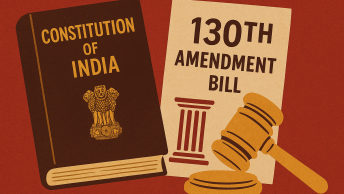Ed note : This is Part II of a two-part series on the UP Anti-Conversion Ordinance. Pat I can be found here
PART-B
Parental intervention: How often & how often legitimate?
In this part of this article, we employ two indicators on our database of 205 cases:
- Who has filed the case? There are two broad possible answers to this question: The couple (either the boy, the girl, or both) or the parents (or/and other relatives of the girl).
Out of all the 205 cases, we found 1 peculiar case in which it could not be made out who in fact is the petitioner. Therefore, we have excluded it from our study, bringing down the total number of cases to 204. - What has been the Judgement/Order? Here, we find there are technically 4 possible answers to this question: Successful (Writ petition allowed), dismissed (Writ petition dismissed), matter listed for another date, and order ambiguous.
Out of all the 204 cases, we found that 61 had been listed for another date and in 4 of the cases the order was so ambiguous that it was not possible to make out sufficiently if the personal liberty was upheld by the court or not. For the purpose of this article, we have considered only the first two possible answers, viz., successful and dismissed. It may be noted that this condition reduces the total number of cases relevant for this section to 139.
Now, on the basis of the above two indicators and two possible outcomes of each of them, we classified our data into four possibilities. These are:
- When parents file the case and it gets successful.
- When the couple files the case and it gets dismissed.
- When parents file the case and it gets dismissed.
- When the couple files the case and it gets successful.
Possibility number 1 [P (1)] corresponds to the case where the daughter goes out of her parental home to the company of her husband and her family members file the petition, claiming that she has been illegally detained by the husband, against the daughter’s free will and this claim succeeds.
Possibility number 2 [P (2)] corresponds to the case in which the husband files the writ, claiming that the family has illegally detained his wife, against her free will and this claim fails.
Possibility number 3 [P (3)] corresponds to the case where the daughter goes out of her parental home to the company of her husband and her family members file the petition, claiming that she has been illegally detained by the husband, against the daughter’s free will and this claim fails.
Possibility number 4 [P (4)] corresponds to the case in which the husband files the writ, claiming that the family has illegally detained his wife, against her free will and this claim succeeds.
Two things must be noted here. First of all, the nomenclature here used is that of husband and wife, implying the fact of marriage. However, there were 2 cases in which marriage did not take place. Secondly, it might not always be the case that the wife is either with the husband or the parents. There are also cases where on the basis of the criminal complaint of kidnapping/abduction filed by the parents against the husband, the Chief Judicial Magistrate sends the wife to a ‘Nari Niketan’ (or a Women’s Shelter). In such cases, the petition filed is to recover the wife from Nari Niketan and for her custody. In fact, there might be other miscellaneous reasons for the detention of the girl at Nari Niketan such as ascertainment of the majority of the girl.
For our analysis, the greater the occurrence of P(3) and P(4), the more it would render the family’s claim/detention wrong, supporting our hypothesis that the family has a habit of illegitimately intervening by filing false cases or detaining the daughter against her wishes. On the other hand, the occurrence of P(1) and P(2) would prima facie mean that the parents’ intervention was held as legitimate by the court.
Now, let us look at our data.
|
Table – 3 |
||
|
Possibilities for ascertaining intervention |
Count |
Percentage |
|
P(1). Parents file and successful |
4 |
2.88 |
|
P(2). Husband/wife files but dismissed |
38 |
27.34 |
|
P(3). Parents file but dismissed |
5 |
3.60 |
|
P(4). Husband files and successful |
92 |
66.19 |


From an examination of our data it is amply clear that P(3) and P(4) occur in 97 out of 139 cases (or 69.8% of all cases). Another way to look at this data is that for every 10 habeas corpus writ petitions filed in relation to marriage cases, the parents’/relative’s intervention is likely to be illegitimate in approximately 7 of them.
It is also noteworthy that in the remaining 30.2% cases, that is, P(1) and P(2) combined, there have been other factors which have favored the family, rather than just the allegation that the daughter was coerced or misrepresented or deceived into marriage. In fact, words like ‘enticement’, ‘misrepresentation’, or ‘honeytrap’ appeared in only 3 of the 139 judgements.
It has been observed by the authors that even in cases of P(1) & P(2), reasons like minority of the girl, want of jurisdiction, suppression of a material fact, etc have been cited by the Court as reasoning for its judgement. This means that even cases of P(1) and P(2) should be taken with a pinch of salt and should not be misconstrued to absolutely imply the legitimacy of parents’ intervention.
The statistics related to cases involving interfaith couples are even more interesting to note. We find that out of the 15 interfaith marriage cases that were found out of 139 cases, 11 fell in either of the possibilities (3) or (4). This implies that in as many as 73.3% cases of interfaith marriages, parental intervention has been held to be illegitimate!
On the basis of the statistics stated just above, the conclusion that can be drawn is that parents and relatives have demonstrated an overwhelming tendency to illegitimately intervene in cases related to their children’s marriage. Section 4 of the Ordinance defines who can lodge a First Information Report (“F.I.R.”), in case they have a problem with the conversion. This section gives this power not only to parents but also extends it to brothers, sisters, or any other relatives related to the person converted by blood or marriage or adoption. This is in addition to parents. In light of our data and above-mentioned conclusion, the authors humbly submit that this addition of other classes of persons increases the chances of a false case being filed, to the harassment of the couple.
Additionally, it must be noted that the Ordinance has introduced a reverse onus clause. Section 12 of the Ordinance transfers the burden of proof from the prosecution to the accused. This would mean that the law shall presume that an unlawful conversion has taken place unless the accused couple proves otherwise. As has been shown by our data previously in the article, parental intervention turns out to be illegitimate in 7 out of 10 cases. This fact, coupled with section 4 of the Ordinance, makes it extremely dangerous and overburdening on the couples willing to marry out of their own sweet will.
Conclusion
Through this article, the authors have argued against the need of the Ordinance by invalidating any claim of Love Jihad by taking habeas corpus cases as a proxy. The conclusion from this study can be classified and summed up under two heads. First, the total cases involving interfaith marriages, during the period 2010 – 2019, are a meagre 21. Even out of these cases, 33.33% are those where the conversion takes place from the Muslim faith to the Hindu faith, dispelling the myth that there is a ‘Muslim conspiracy’, or that there is ‘Love Jihad’. Furthermore, the Court has not found any malice, misrepresentation or fraud in the way these marriages have taken effect, a non-existent problem which the Ordinance seeks to solve. Therefore, the authors conclude that the Ordinance is unnecessary. Second, a study of the cases where legitimacy of parental intervention has been examined reveals that in as many as 7 out of 10 cases, the parents intervene illegitimately. The Ordinance gives this power of intervention to relatives, in addition to parents, resulting in not only an increase in vexatious litigation that will end up clogging the courts, but also the harassment and incarceration of young couples intending to marry out of love. This argument becomes even more strong and presents an even grave problem when coupled with the consideration that the Ordinance includes a reverse onus clause. While it is observed that generally, the High Court rules in favour of the couple, upholding personal liberty and the right to marry out of one’s choice, the Ordinance brings in a mechanism which shall make the exercise of the right to marry out of one’s choice possible only after one wins an extremely demanding legal battle.
The list of all 205 cases analysed can be found here.







As a lawyer i found this article a must read content for every one to understand how gravely this ordinance will affect the young couple willing to access their right to marry of their choice
Good work indeed by Mr Taha bin Tasneem and Mr Afif khan
Keep it up
Thank you, Mr Kashif.